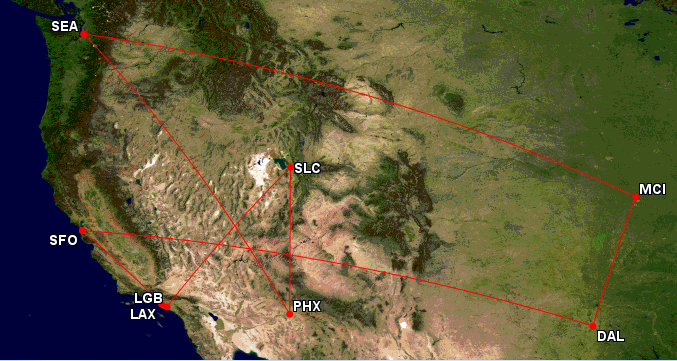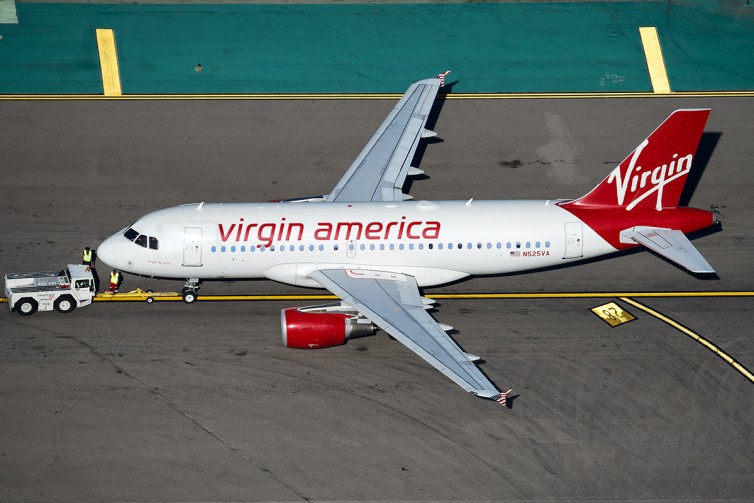
Rumor has it Virgin America is looking to sell – Photo: Bernie Leighton | AirlineReporter
Airlines buying airlines. Mergers. These are the topics that rumors were made for. As I start hearing more rumors about the sale of Virgin America, I wanted to take a closer look at who might buy them — and who wouldn’t. Personally, would I buy them? No. I don’t have the money. If I did, it would be nice, though. A privately-held airline. Immune from Wall-Street capacity discipline bludgeons… heaven!
So now that we know I cannot buy Virgin American… who might?
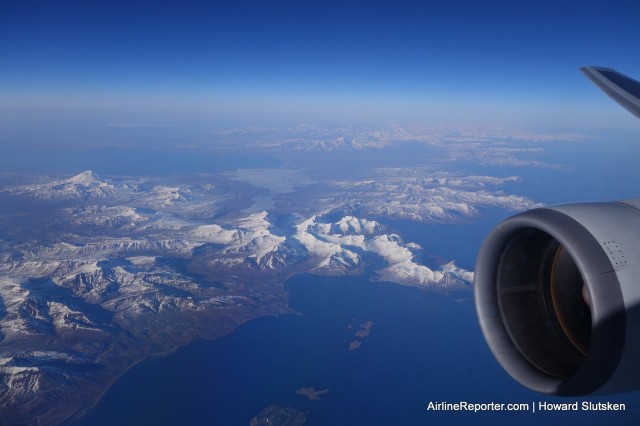
This is the reason that most of us fly, being able to look down at the earth below us.
Flying around the U.S. is something that so many people do on a regular basis. The process used to be much more stressful. Having to track down a travel agent or even buying your ticket at the counter, hoping that there was a seat available. Today, we are able to book our tickets online, months in advance and can have increased confidence that we have a seat on the plane. But even in today’s hi-tech aviation business, there are still times that almost make it feel low-tech and high-stress. I experienced one recently on a flight to Las Vegas. That weekend in Vegas may have been fun, but for this AvGeek it was extremely stressful and I am not even sure if it was worth it.
There are many people who have airline benefits and have the ability to fly for free around the world. I have flown on these “buddy passes” before and previously, and it was not that bad of an experience. However, this trip to Vegas has seriously made me reconsider ever using one again.
“You’re crazy!” That’s the most common reaction I get from non-AvGeeks after describing in detail one of my typical “plane crazy” trips. Unlike a normal person, my travel tends to focus not on the destination, but the journey. That is, the airlines, airplanes, airports, and last but most certainly not least: hap-hazard routing in an effort to add the most diversity to my route map. I just completed one such trip, which I affectionately referred to as my #AirlineSampler.
Planning for this 6k (5,966) mile trek began when I learned United would briefly return a 787 to domestic service. What began as a trip to fly on my first 787 quickly escalated into a cobweb of lines I’d lay across the Great American West (for Missourians, everything west of the arch is west). The trip ended in just under four days, having flown with five airlines and visiting eight airports along the way. Better yet, these would be my very first trips with three of the airlines.
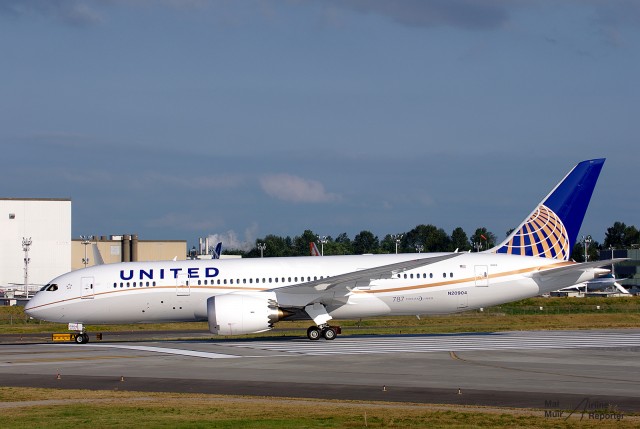
A United Airlines’ Boeing 787-8 – Photo: Mal Muir | AirlineReporter
The experiences I had over this long weekend were both incredible and eye-opening. I want to have enough “runway” as it were to discuss my thoughts on each of the airlines, so we’ll spread these out across a number of posts. At this point, it’s important to note these reviews will be from the perspective of a frequent flier who purposefully chooses Southwest over the other guys most times. I’ve written extensively about my love for Southwest so, for the most part, I’ll leave them out of this series which was focused solely on getting out and exploring the what airline diversity remains in the US. For continuity, I’ll note where I used Southwest for re-positioning and leave it at that.
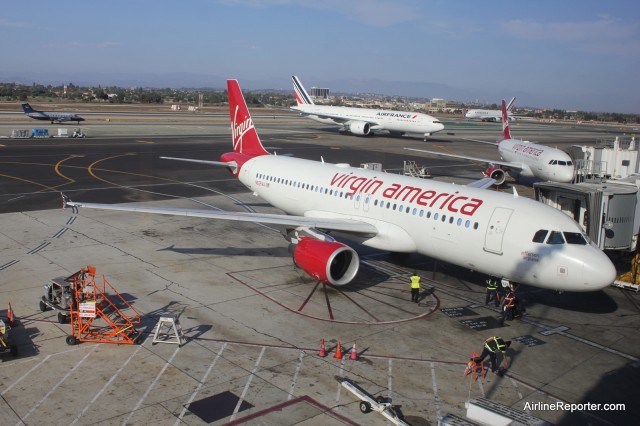
Virgin America Airbus A320 – Photo: David Parker Brown
It has been a while since I’ve flown on Virgin America, and to be honest I’ve sort of missed it. The purplely-pink mood lighting, good food, and that awesome entertainment system; it was a light cutting through the otherwise dark and dank scene of American domestic economy flying.
Thus I was rather looking forward to getting back in the air with Virgin, spurred on by its new codeshare partnership with China Airlines (which I recently sampled and detailed here). Arriving at SeaTac on November 30th, the Sunday after Thanksgiving, I expected mayhem but was instead met with relative calm.
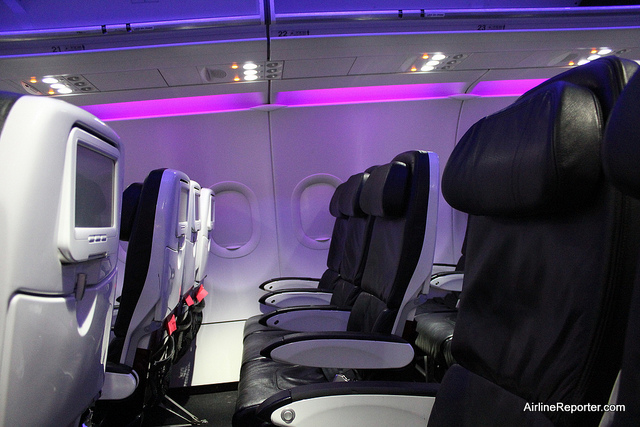
The economy seats in Virgin America’s Airbus A320 – Photo: David Parker Brown
Virgin provided me a ticket in its Main Cabin Express (MCE) block of seats. The benefits are slight, basically amounting to early boarding after first class, seating in the first few rows of economy as well as guaranteed overhead bin access. The service and product are otherwise identical to the rest of the economy cabin.
Boarding was a bit chaotic, mostly thanks to the gate agent never actually announcing that it was time for MCE to board. Suspecting that I’d missed something, I joined the boarding line which now included main cabin passengers, and was ushered on the plane and into seat 5A.
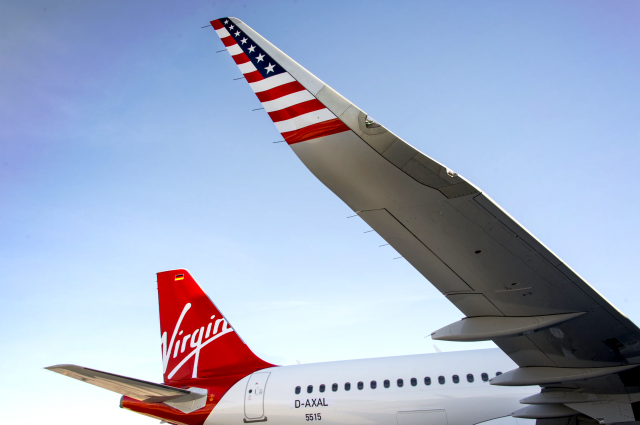
The first Virgin America A320 with Sharklets – Photo: Virgin America
This story was written by John Cameron for AirlineReporter…
The 2014 Airline Quality Rating report was released last week and, for the second year in a row, Virgin America was ranked #1 amongst major US carriers. How did the other airlines fare? Who received the dubious distinction of being ranked worst? You’ll have to read on to find out.
But first, a bit of background information.
The Airline Quality Rating (AQR) report has been published annually since 1991. Yes, 24 years. That’s a long, long time in the commercial aviation industry. To put that into perspective, consider that the AQR predates the prohibition of in-flight smoking in the US (1998), the Embraer ERJ family (1995), the Boeing 777 (1994), the Airbus A330 (1992), and even the ubiquitous Bombardier CRJ (which took to the air one month after the inaugural AQR report was released).
Back then, as the 1990s were just dawning, professors Brent Bowen and Dean Headley realized that the majority of existing airline rating systems relied heavily on subjective surveys of customer opinion that were infrequently collected and largely unreliable. What was needed was a timely, objective, and quantitative rating system that could be used to compare airline performance from year to year.
Thus, the Airline Quality Rating was born.


